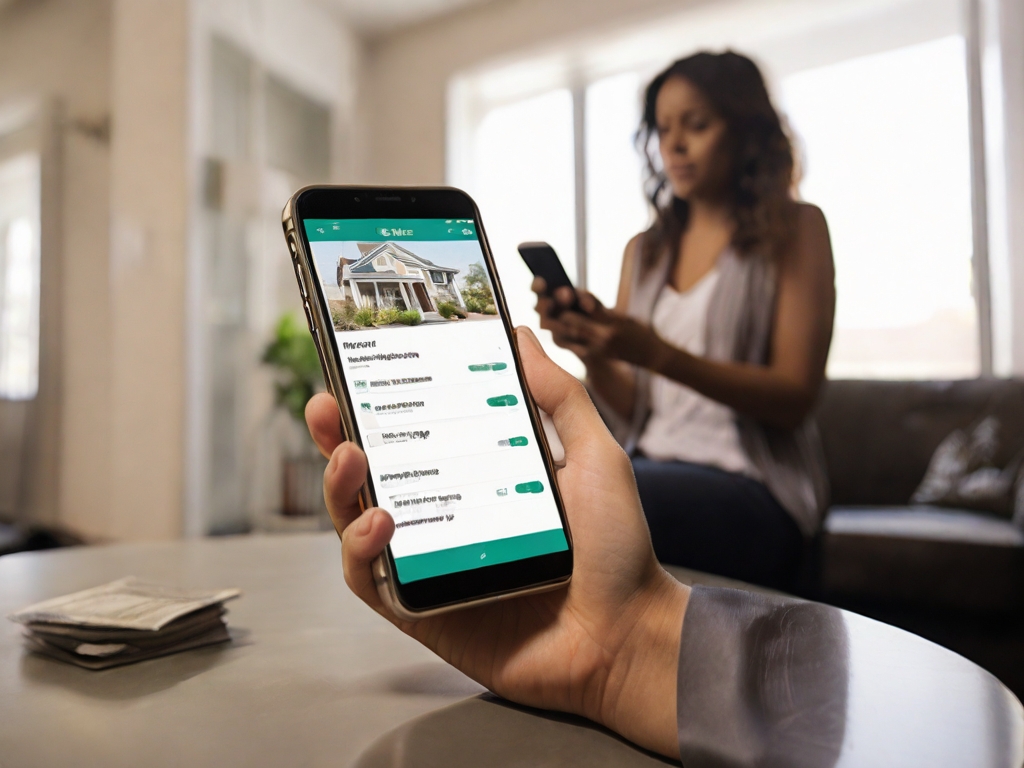Purchasing your first home in Canada is a significant milestone, often marked by excitement and, admittedly, a bit of apprehension. The financial aspect of buying a home can be particularly daunting, especially for those struggling to accumulate a substantial down payment. This is where the Registered Retirement Savings Plan (RRSP) Home Buyer’s Plan (HBP) comes into play, offering a ray of hope for aspiring homeowners. This ingenious program allows first-time homebuyers in Canada to withdraw funds from their RRSPs to finance the purchase of a home, without the immediate tax penalties that typically accompany such withdrawals.

The RRSP Home Buyer’s Plan is not just a policy; it’s a strategic tool designed to make homeownership more accessible to Canadians. By allowing individuals to use their pre-existing RRSP savings towards buying a home, the HBP significantly reduces the financial burden on first-time buyers. This article aims to navigate you through the intricacies of the HBP – from understanding the eligibility criteria to effectively utilizing your RRSP savings, and eventually, repaying the plan. Whether you’re just starting to explore the idea of buying your first home or are already on the path to homeownership, this guide will provide valuable insights into how the RRSP Home Buyer’s Plan can be your key to unlocking the door to your new home in Canada.
Introduction to the RRSP Home Buyer’s Plan
The journey to homeownership in Canada often begins with understanding the financial tools at your disposal. Among these, the Registered Retirement Savings Plan (RRSP) Home Buyer’s Plan (HBP) stands out as a beacon for first-time homebuyers. This segment will explore the RRSP Home Buyer’s Plan, a unique program designed to ease the financial strain of purchasing your first home.
A. What is the RRSP Home Buyer’s Plan? The RRSP Home Buyer’s Plan is a government initiative that allows individuals to withdraw up to $35,000 from their RRSPs to buy or build a qualifying home. This withdrawal is essentially an interest-free loan from your retirement savings, unique because it does not incur the immediate taxes that typically accompany early RRSP withdrawals.

B. Target Audience: First-Time Homebuyers The HBP is specifically tailored for first-time homebuyers in Canada. It recognizes the challenges faced by new entrants in the housing market, particularly the hurdle of accumulating a substantial down payment amidst rising housing costs and living expenses.
C. How the Plan Supports Homeownership Dreams By tapping into their RRSP savings, participants in the HBP can significantly bolster their down payment, potentially allowing them to purchase a home sooner than they would have otherwise. This increased initial payment can also lead to lower mortgage payments, making ongoing homeownership more manageable.
D. The Dual Benefit: Savings and Tax Advantages The HBP isn’t just about accessing funds; it’s also about the strategic use of your savings. Contributions to an RRSP are tax-deductible, meaning participants have likely already received a tax refund on the money they are now using for their home purchase. This creates a dual financial benefit, making the HBP an appealing option for many Canadians.
E. The Role in the Canadian Housing Market The RRSP Home Buyer’s Plan plays a significant role in the Canadian housing market. By aiding first-time buyers, it not only stimulates the market but also helps in maintaining its stability. The plan also encourages saving for retirement, as individuals are more likely to contribute to an RRSP if they know they can access these funds for a major life purchase like a home.
Eligibility Criteria for the RRSP Home Buyer’s Plan
Navigating the eligibility criteria for the RRSP Home Buyer’s Plan (HBP) is crucial for anyone considering this route to homeownership. Understanding who qualifies and the specific requirements is key to effectively leveraging this program. This section outlines the essential eligibility criteria for the HBP, ensuring you’re well-informed before diving into this beneficial opportunity.

A. First-Time Homebuyer Status The HBP is designed for first-time homebuyers. To qualify, you must not have owned a home during the four-year period ending on the date of your HBP withdrawal. This period is measured from January 1 of the fourth year before the year of withdrawal to 31 days before the withdrawal.
B. RRSP Contribution Duration To withdraw funds under the HBP, the contributions must have been in your RRSP for at least 90 days before the withdrawal. This stipulation ensures that the plan is used for its intended purpose and not exploited for short-term gains.
C. Resident Status in Canada Participants must be residents of Canada at the time of the RRSP withdrawal and up to the time a qualifying home is bought or built. This requirement aligns the plan with its goal of supporting Canadian homeownership.
D. Purchase or Building a Qualifying Home The HBP is applicable when you are buying or building a qualifying home, which must be located in Canada. It can be a new or existing home but must be intended as your principal place of residence within one year of buying or building it.
E. Repayment Ability While not an initial eligibility criterion, it’s important to consider your ability to repay the HBP amount. The plan requires repayments over a 15-year period, starting the second year after the year in which you made your withdrawal. Failure to repay can have tax implications
Eligibility Criteria for the RRSP Home Buyer’s Plan
Navigating the eligibility criteria for the RRSP Home Buyer’s Plan (HBP) is crucial for anyone considering this route to homeownership. Understanding who qualifies and the specific requirements is key to effectively leveraging this program. This section outlines the essential eligibility criteria for the HBP, ensuring you’re well-informed before diving into this beneficial opportunity.
A. First-Time Homebuyer Status The HBP is designed for first-time homebuyers. To qualify, you must not have owned a home during the four-year period ending on the date of your HBP withdrawal. This period is measured from January 1 of the fourth year before the year of withdrawal to 31 days before the withdrawal.

B. RRSP Contribution Duration To withdraw funds under the HBP, the contributions must have been in your RRSP for at least 90 days before the withdrawal. This stipulation ensures that the plan is used for its intended purpose and not exploited for short-term gains.
C. Resident Status in Canada Participants must be residents of Canada at the time of the RRSP withdrawal and up to the time a qualifying home is bought or built. This requirement aligns the plan with its goal of supporting Canadian homeownership.
D. Purchase or Building a Qualifying Home The HBP is applicable when you are buying or building a qualifying home, which must be located in Canada. It can be a new or existing home but must be intended as your principal place of residence within one year of buying or building it.
E. Repayment Ability While not an initial eligibility criterion, it’s important to consider your ability to repay the HBP amount. The plan requires repayments over a 15-year period, starting the second year after the year in which you made your withdrawal. Failure to repay can have tax implications.
How to Use Your RRSP Savings to Purchase a Home
Utilizing your Registered Retirement Savings Plan (RRSP) to facilitate the purchase of your first home is a strategic financial move under the Home Buyer’s Plan (HBP). This section guides you through the process of withdrawing funds from your RRSP and highlights the limitations and amounts allowed under the plan.
A. Initiating the Withdrawal Process To begin the withdrawal process, you must first fill out the T1036 form – the Home Buyers’ Plan (HBP) Request to Withdraw Funds from an RRSP. This form must be submitted to the financial institution where your RRSP is held. It’s crucial to ensure that your RRSP contributions have been in the account for at least 90 days before making the withdrawal.

B. Understanding the Withdrawal Limit Under the HBP, you can withdraw up to $35,000 from your RRSP to buy or build a qualifying home. If you are purchasing with a spouse or common-law partner who is also a first-time homebuyer, they can withdraw an additional $35,000, bringing the total to $70,000.
C. No Immediate Tax Penalty One of the significant benefits of the HBP is that the withdrawals are not taxed at the time they are made, provided they are repaid within the specified timeframe. This is a departure from the usual tax implications of withdrawing from an RRSP.
D. Timely Access to Funds Once your HBP request is processed and approved, the funds are typically available within a few days to a few weeks. This timely access is essential for meeting down payment requirements when purchasing a home.
E. Restrictions on Use of Funds It’s important to note that the funds withdrawn under the HBP must be used to buy or build a qualifying home. You are required to enter into a written agreement to buy or build a qualifying home before March 1 of the year after the year of the withdrawal.
Repaying the RRSP Home Buyer’s Plan
Understanding the repayment obligations of the Registered Retirement Savings Plan (RRSP) Home Buyer’s Plan (HBP) is as crucial as the initial withdrawal. This part of the process ensures that the HBP remains a beneficial tool rather than becoming a financial burden. Here, we detail the timeline, rules for repayment, and consequences of non-compliance.

A. Repayment Timeline Repayments to the HBP begin the second year following the year in which you made your withdrawal. You have up to 15 years to repay the entire amount back into your RRSP. Each year, you are required to repay at least 1/15th of the total amount withdrawn.
B. Making Repayments Repayments to your RRSP under the HBP are not automatically deducted from your income. You must designate a portion of your RRSP contributions each year as a repayment to the HBP by completing Schedule 7 with your tax return.
C. Flexibility in Repayments While there is a minimum annual repayment amount, you can repay more than the required amount in any given year. If you do so, your minimum annual repayment for the remaining years will be adjusted accordingly.
D. Tax Implications of Non-Repayment If you do not repay the minimum amount in a given year, that amount is added to your taxable income for that year. This means you’ll pay income tax on the amount that was supposed to be repaid.
E. Monitoring Your Repayment Progress It’s important to keep track of your repayments. The Canada Revenue Agency (CRA) provides an HBP statement of account through My Account on the CRA website, detailing your total repayments and the balance remaining.
Benefits and Considerations of the RRSP Home Buyer’s Plan
The RRSP Home Buyer’s Plan (HBP) is a powerful tool for first-time homebuyers in Canada, but like any financial decision, it comes with its set of advantages and considerations. This section aims to provide a balanced view, helping you make an informed decision about utilizing the HBP for your home purchase.

A. Advantages of Using the HBP
- Increased Down Payment: By using RRSP funds, homebuyers can make a larger down payment, potentially reducing their mortgage amount and interest costs.
- Tax-Free Withdrawal: Funds withdrawn under the HBP are not taxed at the time of withdrawal, provided they are repaid within the 15-year period.
- Flexibility in Repayments: The HBP offers flexibility in repayments, with the ability to repay more or less in a given year, as long as the minimum amount is met over the 15-year period.
B. Considerations Before Using the HBP
- Impact on Retirement Savings: Using RRSP funds for a home purchase can impact your long-term retirement savings. It’s important to balance the immediate benefit of homeownership with your future financial security.
- Repayment Obligations: The requirement to repay the HBP amount within 15 years can be a long-term financial commitment. Failure to meet the annual repayment amounts results in tax implications.
- Market Risk: The real estate market’s volatility means that the value of your home may not always appreciate as expected, which is a risk to consider when using retirement savings for a down payment.
C. Mitigating Potential Drawbacks
- Strategic Financial Planning: Consider speaking with a financial advisor to ensure that using the HBP aligns with your overall financial goals, including retirement planning.
- Regular Monitoring and Adjusting: Regularly monitor your HBP repayments and overall financial situation. Adjust your repayment strategy as needed to stay on track and minimize potential drawbacks.
The Registered Retirement Savings Plan (RRSP) Home Buyer’s Plan (HBP) represents a significant opportunity for first-time homebuyers in Canada. It offers a unique blend of accessibility and financial flexibility, allowing individuals to turn their dreams of homeownership into reality. By understanding the eligibility criteria, utilizing the RRSP savings effectively for home purchase, adhering to the repayment rules, and weighing the benefits against the considerations, prospective buyers can make the most of this program.
The HBP is more than just a financial strategy; it’s a testament to Canada’s commitment to making homeownership achievable for more people. While it requires careful planning and consideration, especially regarding long-term retirement savings, the plan’s advantages are undeniable. For many Canadians, the RRSP Home Buyer’s Plan has been the key to unlocking the door to their first home.
As you embark on your journey towards homeownership, consider the RRSP HBP as a viable option in your financial toolkit. With the right approach and a clear understanding of the plan’s structure and implications, it can be an effective way to achieve your goal of buying your first home in Canada.
